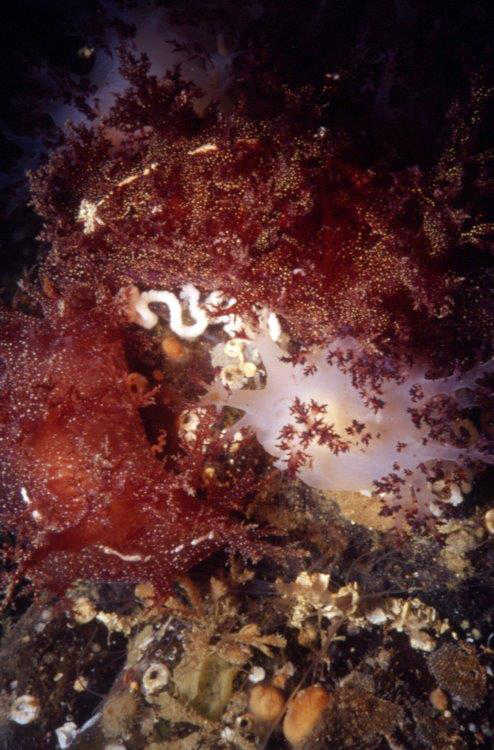Nudibranchs are shell-less-molluscs. Mostly carnivorous, they come in a variety of colors and forms. Many of them have ‘cerata’ on their backs; these are horn-like, sometimes branched, protrusions that serve many functions, including respiration and defense.
They are simultaneous hermaphrodites (male and female at the same time) but do not fertilize their own eggs. Sperm is transferred from one to another by means of a tube extended from behind the head on the right side of the animal to an opening behind the head on the right side of the partner. This arrangement means that mating nudibranchs have to line up with their right sides together. Mating is often reciprocal, each partner transferring and receiving sperm. Eggs are contained in capsules, which are typically laid in long, convoluted ribbons.
Sometimes several individuals are gathered together at mating time, suggesting a molluscan orgy. However, because it does not seem possible for more than two individuals to be mating at the same time, this might be a competitive, jostling struggle for mating privileges or merely lining up for the next opportunity.
• Mary F. Willson is a retired professor of ecology.

